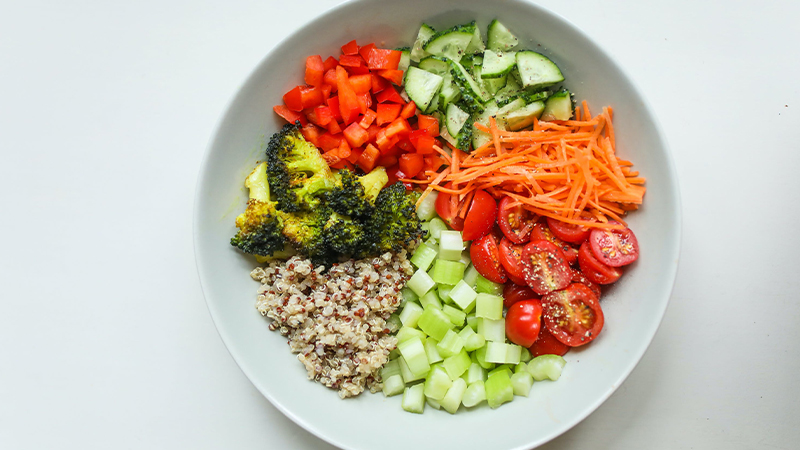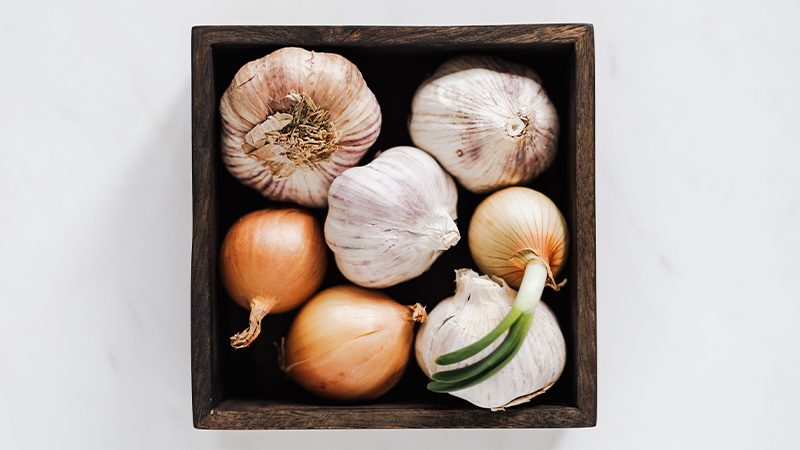Vegetables are nature’s gift to our well-being, and among their countless benefits, their antioxidant content stands out.
Antioxidants are compounds that help protect our cells from the damaging effects of free radicals, which are linked to various chronic diseases and aging.
While many vegetables offer antioxidant properties, some shine even brighter in this regard. In this comprehensive guide, we’ll unveil 16 list of vegetables highest in antioxidants, making them essential components of a health-conscious diet.
From vibrant greens like kale and spinach to the vivid hues of bell peppers and sweet potatoes, each vegetable on this list packs a nutritional punch that can enhance your overall well-being.
Join us on a journey through the diverse world of antioxidant-rich vegetables, and discover how these nutritional powerhouses can be incorporated into your meals to promote better health and vitality.
So, let’s dig in and uncover the secret weapons in the fight for a healthier, happier you.
16 List of Vegetables Highest in Antioxidants

Antioxidants are vital compounds that help protect our cells from damage caused by free radicals, and including these vegetables in your diet can have a profound impact on your health and well-being.
Here’s a list of vegetables that are among the highest in antioxidants. Explore this curated list to make informed choices for a more nutritious and flavorful diet.
Kale and Spinach
Kale is often touted as a superfood, and for good reason. It’s rich in antioxidants, particularly vitamin C and beta-carotene. Additionally, it’s an excellent source of vitamins K and A. Kale is versatile and can be used in salads, smoothies, or as a side dish.
Spinach is packed with antioxidants, including vitamins C and E, as well as beta-carotene. It’s also an excellent source of lutein and zeaxanthin, which promote eye health. This leafy green can be enjoyed fresh in salads, sautéed as a side dish, or blended into a green smoothie.
Red Bell Peppers and Sweet Potatoes
Red bell peppers are known for their vibrant color, which indicates their high antioxidant content, primarily in the form of vitamin C. These peppers can be enjoyed raw in salads, as crunchy snacks, or roasted for added flavor.
Sweet potatoes are a delicious source of beta-carotene, which not only provides a vibrant orange color but also offers antioxidant properties. Additionally, they’re rich in vitamins A and C. Sweet potatoes can be baked, mashed, or turned into healthy fries.
Carrots and Broccoli
Carrots are another vegetable known for their high beta-carotene content, which can promote skin and eye health. They’re not only a great snack but also a versatile addition to various dishes.
Broccoli is packed with antioxidants like vitamins C and A, as well as sulforaphane, a powerful compound that may have various health benefits. This cruciferous vegetable can be steamed, roasted, or stir-fried.
Tomatoes and Brussels Sprouts
Tomatoes are rich in the antioxidant lycopene, which has been linked to numerous health benefits, including a reduced risk of certain cancers. Whether enjoyed fresh in salads, as a base for sauces, or in sundried form, tomatoes offer versatility and flavor.
Brussels sprouts are a good source of vitamins C and K and contain various antioxidants. Roasting them brings out their nutty flavor and enhances their appeal.
Beets and Artichokes
Beets boast an impressive antioxidant profile, with betalains and other compounds that offer anti-inflammatory and detoxification benefits. They can be roasted, boiled, or even used in smoothies.
Artichokes are high in antioxidants and provide various health benefits, such as supporting liver function and digestion. Their tender hearts are often used in salads and dips.
Red Cabbage and Peas
Red cabbage contains anthocyanins, the same antioxidants found in blueberries, which contribute to its rich, purple color. It can be used in coleslaw, salads, or sautéed as a side dish.
Peas, whether fresh or frozen, are rich in antioxidants, particularly vitamin C, and are a good source of dietary fiber. They can be added to soups, stews, or served as a side dish.
Asparagus and Eggplant
Asparagus is a source of antioxidants like vitamins C and A. It’s a versatile vegetable that can be steamed, roasted, or grilled.
Eggplant is high in antioxidants, particularly nasunin, which has been studied for its potential brain-protective effects. It’s often used in dishes like eggplant parmesan or ratatouille.
Onions and Garlic

Onions contain antioxidants like quercetin, which may have anti-inflammatory properties. They can be used as a base for many savory dishes, enhancing both flavor and nutrition.
Garlic is not only known for its flavor but also for its antioxidant properties, which are attributed to allicin. It can be used to season various dishes and is a staple in many culinary traditions.
Zucchini and Cauliflower
Zucchini is a good source of antioxidants, including vitamin C. It’s a versatile vegetable that can be used in pasta dishes, stir-fries, and even baked goods.
Cauliflower contains antioxidants like sulforaphane and quercetin, which have been associated with various health benefits. It’s often used as a low-carb alternative in recipes like cauliflower rice or mashed cauliflower.
Green Beans and Swiss Chard
Green beans are a source of antioxidants like quercetin and catechins. They can be enjoyed steamed, roasted, or sautéed.
Swiss chard is rich in antioxidants, particularly vitamins C and E. It can be used in salads, sautéed as a side dish, or added to omelets.
Cilantro and Green Peppers
Cilantro is an herb with antioxidants like quercetin and kaempferol. It’s often used as a garnish in various dishes, adding a burst of flavor and nutrition.
Green peppers are a source of antioxidants like vitamins C and A. They can be used in salads, stuffed with other ingredients, or as a crunchy addition to various dishes.
Watercress and Mushrooms
Watercress is packed with antioxidants and is often used in salads, sandwiches, or as a garnish for soups.
Mushrooms contain various antioxidants, including ergothioneine and selenium. They can be added to omelets, and stir-fries, or used as a meat substitute in vegetarian dishes.
Arugula and Okra
Arugula is rich in antioxidants, primarily vitamins A and K. It’s often used in salads, adding a peppery and distinctive flavor.
Okra is a source of antioxidants like quercetin and catechins. It’s commonly used in stews, gumbo, or pickled.
Avocado and Butternut Squash
Avocado is not only a source of healthy fats but also antioxidants like lutein and zeaxanthin, which support eye health. It can be used in salads, spreads, or as a topping for various dishes.
Butternut squash is rich in antioxidants, particularly beta-carotene. It’s often used in soups, roasted dishes, or mashed as a side.
Radishes
Radishes, with their vibrant colors and distinctive crunch, are more than just a zesty addition to your dishes. These root vegetables pack a punch when it comes to antioxidants.
Loaded with quercetin and anthocyanins, they bring a powerful anti-inflammatory and free-radical-fighting arsenal to your plate.
Whether thinly sliced in salads, enjoyed as a crunchy, guilt-free snack, or transformed into tangy pickles, radishes not only tantalize your taste buds but also nourish your body with their antioxidant goodness.
Turnip Greens
Don’t overlook the leafy greens atop your turnips; they are a nutritional powerhouse. Turnip greens are an excellent source of antioxidants, particularly vitamins C and A.
These antioxidants bolster your immune system and promote healthy skin, vision, and overall well-being. Embrace their versatility by incorporating them into your culinary creations.
Add a vibrant crunch to salads, sauté them to harness their earthy flavors, or toss them into hearty soups for an extra dose of antioxidants that your body will thank you for.
These antioxidant-rich vegetables offer a diverse range of flavors, textures, and colors, making it easy to incorporate them into your daily meals.
Remember that a diet rich in a variety of antioxidants from vegetables can contribute to better health, protect against chronic diseases, and support your overall well-being.
So, embrace the rainbow of colors and flavors provided by these vegetables, and enjoy the nutritional benefits they offer.
FAQs
What are antioxidants in vegetables?
Antioxidants are compounds found in vegetables that help protect cells from damage caused by free radicals. They play a vital role in reducing the risk of chronic diseases and aging.
Which vegetables are highest in antioxidants?
Some of the vegetables with high antioxidant content include kale, spinach, broccoli, bell peppers, and carrots. Dark, leafy greens are generally a good source of antioxidants.
Why are antioxidants important in our diet?
Antioxidants help combat oxidative stress in the body, which is linked to various health issues like cancer, heart disease, and aging. Consuming vegetables rich in antioxidants can support overall health.
How should I prepare vegetables to retain their antioxidants?
To preserve antioxidants in vegetables, avoid overcooking or boiling them for extended periods. Steaming, stir-frying, or consuming them raw is a better way to retain their nutritional value.
What are some other benefits of antioxidant-rich vegetables?
Besides their antioxidant properties, these vegetables are typically high in essential vitamins, minerals, and dietary fiber, which can contribute to better immunity, digestion, and overall well-being when included in your diet.
Conclusion
In this exploration of vegetables highest in antioxidants, we’ve delved into the colorful and nutritious world of these remarkable plant-based foods.
Antioxidant-rich vegetables are a cornerstone of a health-conscious diet, offering an array of benefits that extend far beyond the dinner plate.
These vegetables, from the vibrant reds of tomatoes to the lush greens of broccoli and spinach, are champions in the fight against oxidative stress and the many health challenges it poses.
Incorporating these nutrient powerhouses into your meals not only elevates your culinary experience but also fortifies your body’s defenses against the harmful effects of free radicals.
So, embrace the rich palette of antioxidant-packed vegetables, and let them be your allies in the quest for a healthier, happier you. Whether you’re sautéing, roasting, or tossing them into a crisp salad, these vegetables are your partners on the path to overall well-being.
Hi, I’m Mark Pattinson and I’m a freelance personal trainer. I’ve been working in the fitness industry for over 10 years especially since I work with diabetes patients and I love helping people achieve their fitness goals. I believe that everyone can benefit from a good workout, and I’ll do everything to make sure you get the most out of your training.